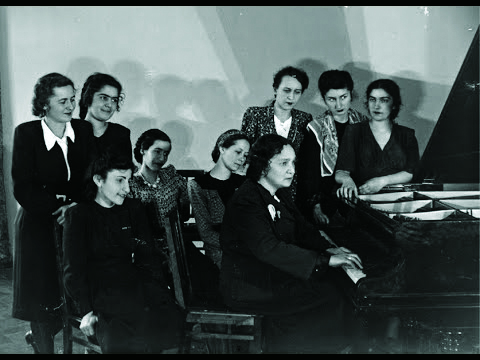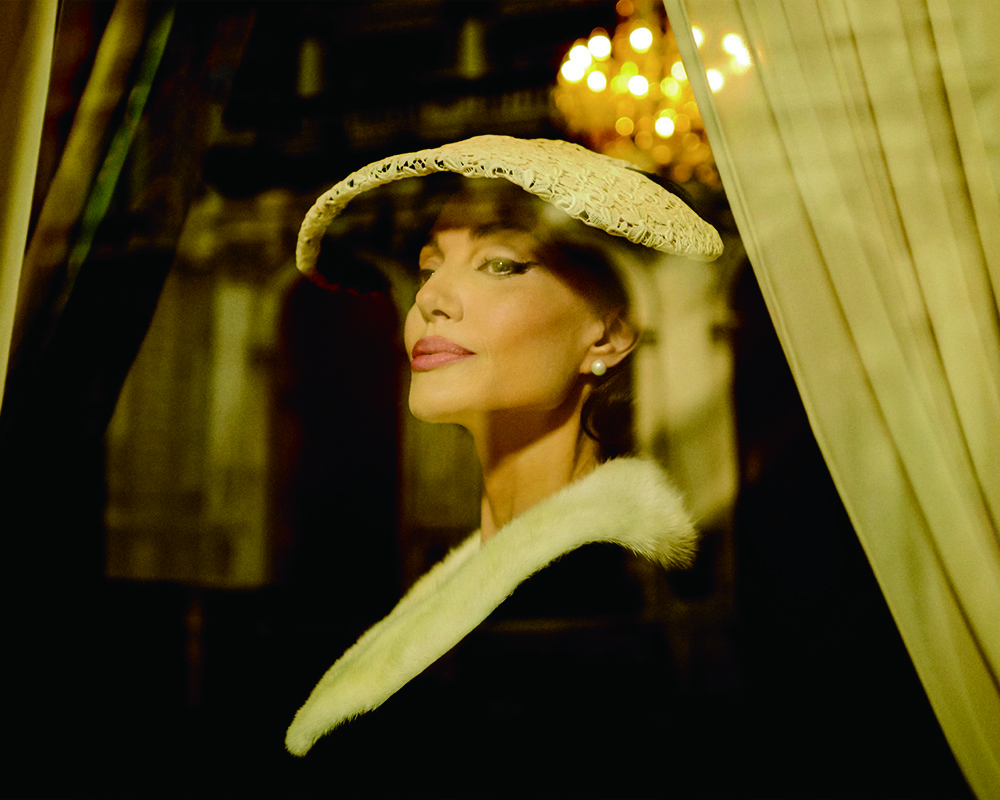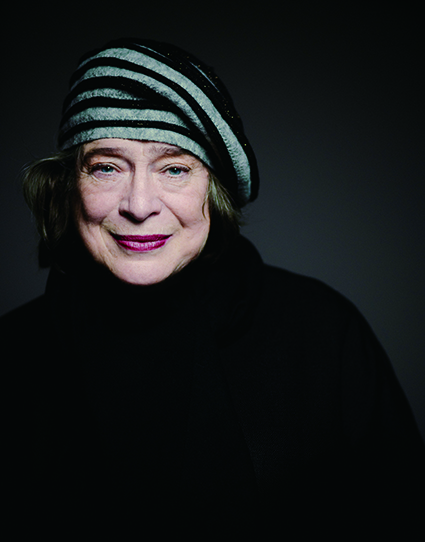노먼레브레히트칼럼 SINCE 2012
영국의 평론가가 보내온 세계 음악계 동향
지배당하지 않는 여성 피아니스트 러시아 음악 속 마리아 유디나의 위치

마리아 유디나
러시아의 예술적 우월성을 강조하기에 적절한 시기는 아니지만, 음악적으로만 본다면 반박의 여지는 없다. 지난 한 세기 동안 러시아는 라흐마니노프부터 녹음의 시초를 열어준 호로비츠, 오늘날의 다닐 트리포노프와 이고르 레비트에 이르기까지 세계적으로 뛰어난 피아니스트들을 배출해왔다.
구소련 체제는 인재의 배출을 가로막기는커녕 오히려 그 속도에 박차를 가했다. 음악 애호가라면 별다른 어려움 없이 베토벤의 주요 작품을 음반으로 낸 소련 출신 피아니스트 삼십여 명 정도는 거뜬히 읊을 수 있을 테다. 그들의 머릿속에 떠오르는 것은 안하무인 황소고집의 스뱌토슬라프 리히테르, 겁에 질린 공산당 옹호자 에밀 길렐스와 더불어 해외여행이나 안락한 생활을 할 권리를 허락받지 못한 미지의 동류 피아니스트들이다.
이들 중, 늦게나마 세계적으로 인정받은 두 명의 여성, ‘마리아 그린버그’와 ‘마리아 유디나’가 있다. 그린버그(1908~1978)는 처음에는 헌신적인 공산주의자였으나, 1937년 아버지가 스탈린에 의해 총살당해 죽는다. 그로부터 30년 뒤 크렘린궁에서 6일 전쟁을 두고 이스라엘 정부의 공격에 대해 비난하자, 그린버그는 자신의 아버지의 이름을 딴 신랄하고도 참신한 서명 ‘마리아 침략자로브나(Maria Aggressorovna)’를 자필로 서명한다. 그녀의 행동에, 크렘린궁은 아무것도 할 수 없었다.
유디나(1899~1970)는 처음부터 공산주의를 거부했다. 1919년에는 러시아 정교에 귀의한다. 그녀는 시베리아에서 자신의 삶과 자유를 내걸고 망명한 성직자들을 도왔으며, 모스크바 공연계에서는 열성적으로 저항하면서도 정교회와 양가적인 관계를 유지했다. 유디나는 레닌그라드의 신비주의 은둔자 갈리나 우스트볼스카야의 음악은 물론, 스트라빈스키의 작품이 공식적으로 금지되었을 때도 그의 곡을 연주했다. 유디나의 첫 영어판 전기인 엘리자베스 윌슨(1947~)의 ‘플레잉 위드 파이어(Playing With Fire)’에서는 1962년 유디나가 말끔한 헤어스타일의 스탈린주의자이자 기관원인 티혼 흐렌니코프를, 부스스한 머리에 레인코드 차림으로 마주하고 있는 사진을 볼 수 있다. 그는 반세기 동안 구소련 작곡가들의 목숨 줄을 쥐락펴락한 인물이었지만, 유디나는 두려워하지 않았다. 1960년대 모스크바 주재 영국 대사의 딸이자 첼리스트인 저자 윌슨은 잘못된 구실로 책을 사려는 사람이 없도록, 러시아 밖에서도 누구나 알고 있는 유디나에 대한 가장 유명한 일화를 빠르게 털어낸다. 이 일화는 솔로몬 볼코프의 베스트셀러 ‘증언(Testimony)’(1979)에도 나온다. ‘증언’은 1975년 사망한 작곡가 드미트리 쇼스타코비치의 밀반출된 회고록으로 모아 출판한 책이다.
책 속 쇼스타코비치의 회고에 따르자면 어느 날 밤, 라디오에서 우연히 유디나의 모차르트 피아노 협주곡 23번 연주를 들은 스탈린이 이 연주의 레코드를 찾는다. 녹음된 음반이 없었기에, 스탈린의 부하들은 한밤중에 유디나와 오케스트라, 겁에 질린 지휘자 세 명을 녹음실로 떠밀어 위대한 지도자를 위한 단 하나의 레코드를 찍어냈다. 스탈린이 기뻐하며 유디나에게 2만 루블을 상금으로 주었지만, 그녀는 자신이 다니는 교회에 상금을 기부하며 “주님께 인민과 국가에 끼친 당신의 죄악을 용서해달라 청하겠습니다. 주님은 자비로우시니 당신을 용서하실 겁니다.”라는 서한으로 회신했다는 것이다. 이 일화는 아르만도 이아누치의 독특한 영화 ‘스탈린이 죽었다!(The Death of Stalin)’(2017)의 첫 장면이기도 하다. 전해지는 이야기에 따르면 차갑게 식은 스탈린의 시신 옆 턴테이블에 유디나의 모차르트 레코드가 돌아가고 있었다고도 한다. 안타깝게도 이 이야기는 증명할 수도 없고 사실일 가능성도 없다. 윌슨은 쇼스타코비치와 자신의 스승 므스티슬라프 로스트로포비치의 주요 자서전을 출간한 포기를 모르는 연구자였는데, 그에 따르면 라디오 기록 보관소나 잘 보존된 스탈린의 기록보관소에서도 유디나의 모차르트 피아노 협주곡 23번의 흔적을 찾을 수 없었다. 작가는 쇼스타코비치가 스탈린에 대해 장황한 이야기를 정교하게 지어내는 것을 즐겼다는 말로 마무리 짓는다.
종교적 신념의 발현
윌슨은 유디나의 흔적을 쫓아 마르크 샤갈의 작품으로 기억되는 장소이기도 한 벨라루스의 비텝스크 근처, 러시아 네벨의 유대인 집단 거주 지역에 세속화한 한 유대인 가족을 추적한다. 유디나의 아버지 베니아민은 두 차례 결혼하였으며 추운 겨울에도 호수에서 수영하는 금욕적이고 지독한 일벌레 의사였다. 유디나의 동창생은 그녀에 대해 “몸집이 크고 다소 진중했으며 또래에 비해 조숙하게 행동했다”고 회상한다. 의학과 문학으로 점철된 체호프 풍의 어린 시절을 보내고 난 뒤, 그녀는 상트페테르부르크로 가서 전설적인 두 스승을 사사한다. 바로 빈에서 음악을 가르치던 테오도르 레셰티츠키의 전 부인인 안나 예시포바와 작곡가 카롤 시마노프스키의 친척인 펠릭스 블루멘펠트였다.
1917년 러시아 혁명이 일어나자, 유디나는 황제의 몰락에 기뻐하며 ‘인민 민병대’에 합류했고, 사람들을 모아 노동자 계급 아이들을 위한 놀이 학교를 운영한다. 그러나 고향을 방문한 짧은 기간에 기독교로 개종한 유대인들이 대부분이었던 치명적인 헤겔학파, 칸트학파 철학자 무리를 만나게 되고, 그녀는 이윽고 러시아 정교회에 빠져든다. 무신론자인 아버지는 길길이 날뛰었지만, 그녀는 자신의 멘토기도 한 레브 펌프얀스키라는 이름의 원전(原典) 비평가와 속수무책으로 사랑에 빠진다. 어울리지 않는 연인의 덧없는 첫 시작이었다. 유디나가 그의 청혼을 거절하자 펌프얀스키는 자신을 계단 밑으로 내동댕이친 유디나의 아버지를 폭행하기에 이른다.
유디나는 페트로그라드(상트페테르부르크의 옛 이름)의 음악원에서 공부하는 동안 철학서적을 읽으며 종교의 신비함에 흠뻑 빠져든다. 그녀는 ‘내적 망명’이라는 이념사를 가르치는 도스토예프스키적 인물이자 기호론자인 미하일 바흐친에게 매력을 느낀다. 20대 중반의 나이에 유디나는 다른 음악가들이 평생에 걸쳐 습득하는 것보다 더 다양한 차원의 것들을 공부했다.

마리아 유디나
그녀는 1923년 페트로그라드 음악원의 피아노 전임교수로 발탁되어 이후 종교 활동으로 해고되기 전까지 7년간 근무한다. 운 좋게 국외추방을 피했지만 유디나는 또 다른 위험을 무릅쓴다. 이에 대해 윌슨은 이렇게 기록한다. “그녀는 어떻게 해서든 불명예스러운 망명자들이 있는 장소와 수용소로 용케 떠났다. (…) 주교들은 망명자들로부터 받은 메시지와 가르침을 사제와 신도들에게 전달했다.”
14개월간 22번의 연주회를 소화할 정도로 독주자로서 인기는 드높았지만, 유디나의 삶은 대개 ‘늑대와 같이 굶주린’ 생활이었고, 친구들의 도움에 의지해 살았다.
그린버그와 함께, 베토벤 소나타 전곡을 남기며
처음으로 피아노 소나타 전곡을 연주한 최고의 베토벤 해석가, 아르투르 슈나벨의 러시아 방문은 결정적인 영향을 끼쳤다. 1930년대 모스크바 음악원에 그녀의 일자리를 마련해 준 겐리히 네이가우스(1888~1964)의 후원 역시 중요한 지점이었다. 리히터와 길렐스의 스승이자, 시인 보리스 파스테르나크에게 아내를 빼앗긴 네이가우스는 유디나만큼 격렬한 인물이었다. 이후 그는 유디나의 연주를 ‘제멋대로’라며 (부당하게) 비하하고 만다. 유디나는 네이가우스만큼 매력적인 스승은 되지 못했지만, 그녀의 연주는 지속적으로 성장했고 대중적인 인기를 얻는다.
유디나는 마리아 그린버그를 라이벌이자 동지로 보고, 자신의 장례식장에서 연주해 주길 바라는 사람은 오직 그린버그뿐이라 선언했다. 두 사람은 1950년대 후반 스탈린 사후에 기관원을 설득하여 조용하게 베토벤 소나타 전곡을 녹음한다. 소박한 녹음실에서 상태가 그리 좋지 않은 피아노로 이뤄진 이들의 연주는 초월성의 승리를 나타낸다. 한때 리히터는, 유디나가 피아노를 자신이 원하는 그 어떤 악기처럼 연주할 수 있다고 말했다.
그녀의 사랑은 가망 없이 자신의 마음속에서만 계속되었고 한 명의 작곡가와 또 다른 작가가 그녀의 마음을 거쳐 갔다. 윌슨에 따르면, 유디나는 자신이 만들어낸 환상 속에 살며 미심쩍지만 잘생긴 천재들에게 스스로가 뮤즈이자 팜 파탈이 되는 상상을 했다. 1969년 6월, 모스크바의 멜로디야 스튜디오를 나서던 그녀는 교통사고를 당한다. 윌슨은 이렇게 적는다. “맨 처음 유디나가 한 생각은 운전자가 고소당하면 안 된다는 것이었다. 전부 그녀의 과실이었다.” 18개월 후, 유디나는 생을 마감한다. 길렐스와 마찬가지로 약물 사용 과오로 인한 죽음이었다.
‘플레잉 위드 파이어’는 영원한 관련성을 지닌 비범한 한 인물에 대한 경이로운 전기이자 놀라운 작품이다. 유튜브에서 유디나의 베토벤 32번 Op.111 아리에타부분 연주를 들어보라. 그녀의 소리가 내뿜는 견고한 힘과 격정적인 리듬을 들으며 우리는 예술가의 생이 녹음되는 한, 죽음은 그 무엇도 지배하지 못하리라는 것을 깨닫게 되리라. 번역 evener
글 노먼 레브레히트
영국의 음악·문화 평론가이자 소설가. ‘텔레그래프’지, ‘스탠더즈’지 등 여러 매체에 기고해왔으며, 지금 이 순간에도 자신의 블로그(www.slippedisc.com)를 통해 음악계 뉴스를 발 빠르게 전한다

유디나 전기 ‘플레잉 위드 파이어’
*노먼 레브레히트 칼럼의 영어 원문을 함께 제공합니다 본 원고는 본지의 편집 방향과 일치하지 않을 수 있습니다
This may not be the timeliest moment to proclaim Russia’s creative superiority, but the musical facts are incontrovertible. Over the past century, Russia has produced most of the world’s outstanding pianists, from Rachmaninov and Horowitz at the dawn of recording to Daniil Trifonov and Igor Levit right now.
The Soviet system didn’t interrupt the flow of talent. If anything, it accelerated the production line. Any serious music lover can enumerate without difficulty three-dozen Soviet pianists who made important Beethoven recordings. At their head are Sviatoslav Richter and Emil Gilels—one a bull-headed law unto himself, the other a petrified Party flag-bearer—and behind them are legions of relative unknowns who were denied the right to travel abroad or obtain a comfortable lifestyle.
Among them, two women—Maria Grinberg and Maria Yudina—deserve universal recognition, if much belated. Grinberg (1908-78) was a committed Communist whose father was shot on Stalin’s orders in 1937. Thirty years later, when the Kremlin accused the Israeli state of aggression in the Six-Day War, Grinberg signed autographs with a caustic new patronymic: “Maria Aggressorovna.” The Kremlin could never control her.
Yudina (1899-1970) rejected communism from the outset, converting to Russian Orthodoxy in 1919. She risked life and liberty supporting exiled priests in Siberia, all the while maintaining an ambivalent relation to the official church and displaying a wild-haired defiance at the heart of Moscow’s concert life. She played Stravinsky when he was officially banned, as well as the music of the mystical Leningrad recluse Galina Ustvolskaya. In Elizabeth Wilson’s “Playing With Fire,” the first English-language biography of Yudina, there is a fabulous 1962 photograph of the pianist in a scruffy raincoat and uncombed hair facing down the manicured Tikhon Khrennikov, a Stalinist apparatchik who ruled the lives of Soviet composers for half a century. Yudina was not afraid.
Lest anyone be tempted to buy the book under false pretences, Ms. Wilson—the cellist-daughter of a 1960s British ambassador to Moscow—is quick to debunk the only story about Yudina that anyone knows outside Russia. It appeared in Solomon Volkov’s “Testimony” (1979), a bestselling account that was published as the smuggled-out memoirs of the composer Dmitri Shostakovich, who had died in 1975. According to Shostakovich (in Volkov’s account), Stalin, upon hearing Yudina play a Mozart concerto (K.488) one night on the radio, asked for a recording of it. There was none, so his minions hustled Yudina, an orchestra and three frightened conductors into a studio in the dead of night and pressed a single copy for the Great Leader. Stalin, delighted, sent Yudina a prize of 20,000 rubles. She wrote back saying that she was giving the money to her church and would pray to the Lord to pardon “your great sins before the people and the country. The Lord is merciful and He will forgive you.” The story forms the opening scene of Armando Iannucci’s quirky 2017 film, “The Death of Stalin.” According to a further legend, Yudina’s Mozart record was found spinning on the turntable beside Stalin’s lifeless body. Unfortunately, not a word of this tale is verifiable or likely to be true. Wilson, an indefatigable researcher who has produced important biographies of Shostakovich and of her teacher Mstislav Rostropovich, found no trace in radio archives of Yudina recording the Mozart concerto K.488 or of any such item existing in Stalin’s extraordinarily well-kept archives. She concludes that Shostakovich enjoyed spinning yarns about Stalin, elaborating them with each retelling.
Wilson traces Yudina to a secularized Jewish family in the Pale of Settlement at Nevel, near Vitebsk in Belarus, a milieu embedded in Western art by Marc Chagall. Yudina’s father, Veniamin, was a hospital doctor, twice married, ascetic and workaholic, a lake swimmer in icy winters. His daughter in her early teens, a classmate recalled, was “large, somewhat heavy” and acted older than her years. After a Chekhovian childhood of medical and literary conversations, she went to St. Petersburg to study music with two Poles: Anna Yesipova, ex-wife of the Vienna teacher Theodor Leschetizky; and Felix Blumenfeld, a relative of the composer Karol Szymanowski.
fDuring the 1917 Revolution, Yudina rejoiced at the fall of the czar, joined a “people’s militia” and formed a group to run a play-school for working-class children. But a short trip home plunged her into an intoxicating circle of Hegelian and Kantian philosophers who, mostly Jewish converts to Christianity, drew her toward the Russian Orthodox Church. Yudina’s atheist father was outraged, but she was helplessly in love with her mentor, a textual critic by the name of Lev Pumpyansky, the first of a string of unsuitable, ephemeral lovers. When she declined his offer of marriage, Pumpyansky set out to assault her father, who threw him down the stairs.
Yudina continued reading philosophy while studying at the musical conservatory in renamed Petrograd and immersing herself still further in the mysteries of faith. She was drawn toward the semiotician Mikhail Bakhtin, a Dostoevskian figure who taught the history of ideas from one place of internal exile to another. Yudina, by her mid-20s, had more dimensions of learning than most practical musicians acquire in a lifetime.
In 1923, she was appointed professor of piano at the Petrograd Conservatory, a post she held for seven years until her religious activism got her fired. Lucky to escape deportation, she took incalculable risks. “She somehow managed to travel to the camps and places of exile of the disgraced . . . bishops, bringing messages and instructions from them to their priests and congregations,” Wilson reports. Although in high demand as a soloist, giving 22 recitals in 14 months, she was often “hungry as a wolf,” dependent on the charity of friends.
A decisive influence was the visit to Russia of Artur Schnabel, the paramount Beethoven interpreter who was the first to perform the 32 piano sonatas as a cycle. Another vital connection was the patronage of Heinrich Neuhaus, who in the 1930s brought her to teach at the Moscow Conservatory. Neuhaus, whose students included both Richter and Gilels and whose wife left him for the poet Boris Pasternak, occupied a milieu as heady as Yudina’s. He came to disparage her playing (unfairly) as “wayward.” Yudina was never a teacher of equivalent magnetism to Neuhaus, but her performances grew steadily in stature and popular appeal.
She recognized Maria Grinberg as both a rival and kindred spirit, declaring that Grinberg was the only person she wanted to play at her funeral. Both women somehow persuaded post-Stalin apparatchiks to let them quietly record the complete Beethoven sonatas in the late 1950s. Performed on indifferent pianos in primitive studios, the two sets represent triumphs of transcendence. Yudina, Richter once said, could make the piano sound like any instrument she wanted.
The hopeless love affairs continued—a composer here, a writer there—often only in her own mind. Yudina, as Ms. Wilson describes her, survived in a self-made fantasy bubble, imagining herself as muse and femme fatale to handsome men of questionable genius. In June 1969, as she walked out of the Melodiya studios in Moscow, she was knocked down by a car. “Her first thought,” Wilson writes, “was about the driver—he shouldn’t be prosecuted, it had all been her fault.” Yudina died 18 months later, the victim (like Gilels) of a medication error.
“Playing With Fire” is a ground-breaking work—a phenomenal biography of a towering human spirit of everlasting relevance. Listen now to Yudina play the Arietta of Beethoven’s Op. 111 sonata on YouTube and you will know from the unwavering strength of her sonority and the frenzy of her rhythms that death, in a recorded artist’s life, shall have no dominion.
————
마리아 유디나
영화 ‘스탈린이 죽었다!’
마리아 유디나
유디나 전기 ‘플레잉 위드 파이어’
마리아 유디나 사후 50주기 기념반(Melodiya)
유디나의 베토벤 소나타 32번 2악장







